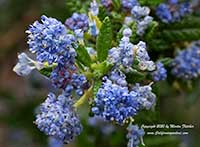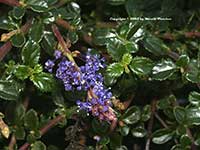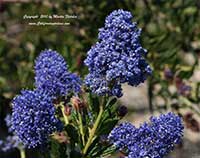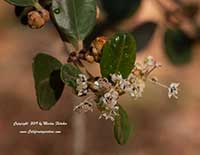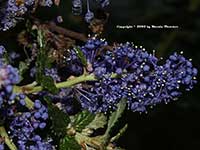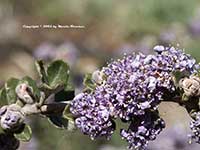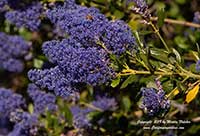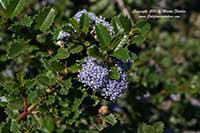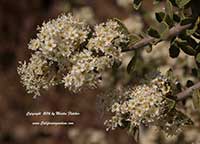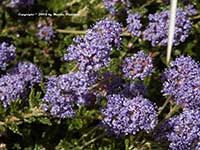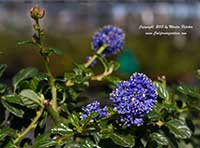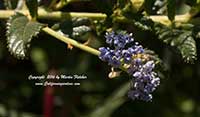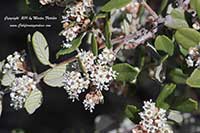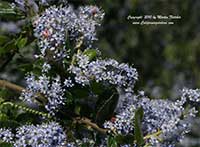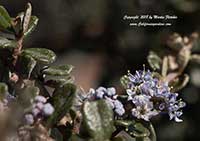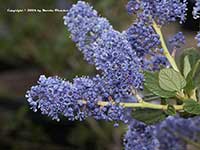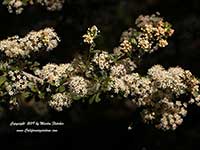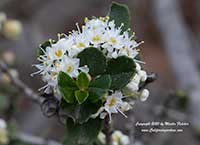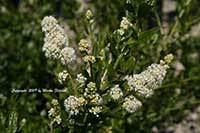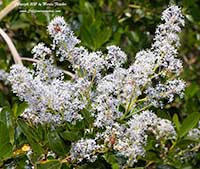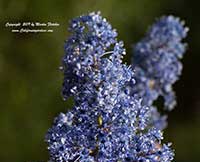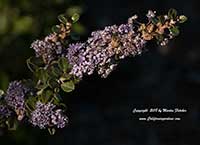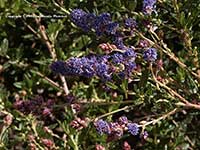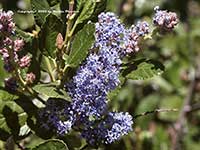Ceanothus, California Lilac for a California Garden
A B C D E F G H I J K L M N O P Q R S T U V W X Y Z
Flowers by color:
Blue Flowers Pink Flowers Purple Flowers Orange Flowers Red Flowers Salmon Flowers Yellow Flowers White Flowers
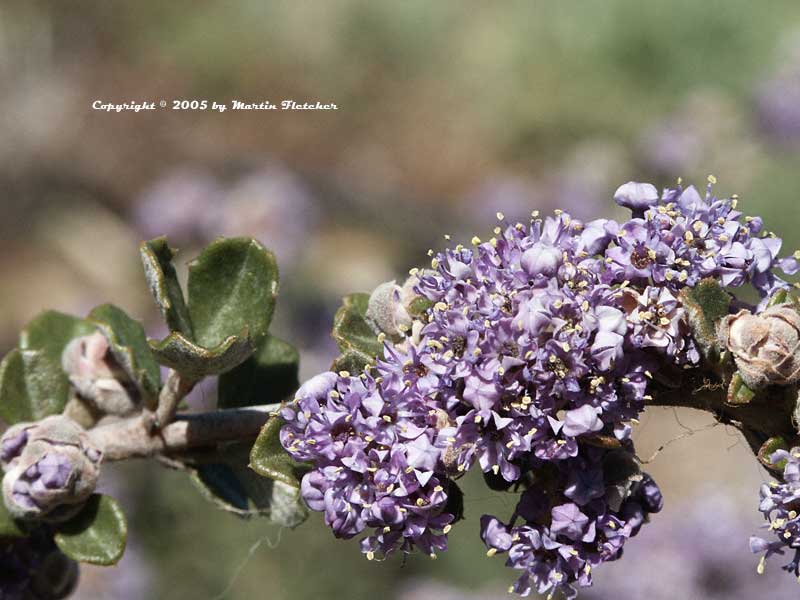
Ceanothus, common name California Lilac's, grow in the chaparral on generally south-facing slopes, in rather rocky, well-drained soils. In their wild conditions Ceanothus plants have a natural life cycle of 10-15 years and in exceptional conditions can make 25-40 years, though fire often shortens that span. There are more than 50 species native to California. The range of the Ceanothus genus extends from Canada to Central America into Guatemala. There are a few Rocky Mountain and Eastern US species as well, but the greatest number of Ceanothus species live right here in California. Ceanothus can acquire it's own nitrogen with the help of naturally associated fungi. Judging by the typical rate of growth and dark leaves at the end of the rainy season Ceanothus does this very well. Adding fertilizer will just kill off the good fungi and make room for the bad ones. Ceanothus plants are better off left fending for themselves. Species range from being treelike with a Ceanothus arborescens cultivar like Ray Hartman to spreading ground covers with Ceanothus 'Centennial' and Ceanothus hearstiorum. A large number of hybrids and cultivars were developed during the drought in the 1980's but many of those are no longer offered in nurseries.
In the garden setting Ceanothus are prone to root rot with heavier soils and regular water, but will usually persist for a decade or more with limited watering. If mulch is piled around the trunks and branches the moisture is held against the bark and this causes rot and this will hasten the demise of the plant. I plant Ceanothus root balls a little higher than the surrounding grade. I try to plant on slopes so the surface runoff drains more rapidly. Drip irrigation helps avoid rot problems because the water is placed directly on the ground. I place the drippers about a foot away from the trunk of a one gallon plant. Regularly timed water often shortens Ceanothus plants life expectancy. Think monsoonal rain, periodic binge water works much better. A number of species that are in the horticultural trade are from coastal areas of Central California. These areas have much higher rainfall rates than Southern California and inland gardens. Supplimental water will be required for these selections. Younger plants definitely have a higher survival rate than older ones. I prefer to plant Ceanothus from one gallon containers.
Ceanothus is a larval host plant for the Pale Tiger Swallowtail Butterfly and the Western Tussock Moth Caterpillar, and a nectar source for the Monarch Butterfly.
I often use the lower varieties such as Ceanothus hearstiorum, Anchor Bay or Centennial in fire prone areas because the fire requires oxygen, because of the dense low lying foliage there is not enough available air for the fire to rapidly burn through the low matted growth of these compact varieties.
Ceanothus, California Lilac's - For a California Garden
